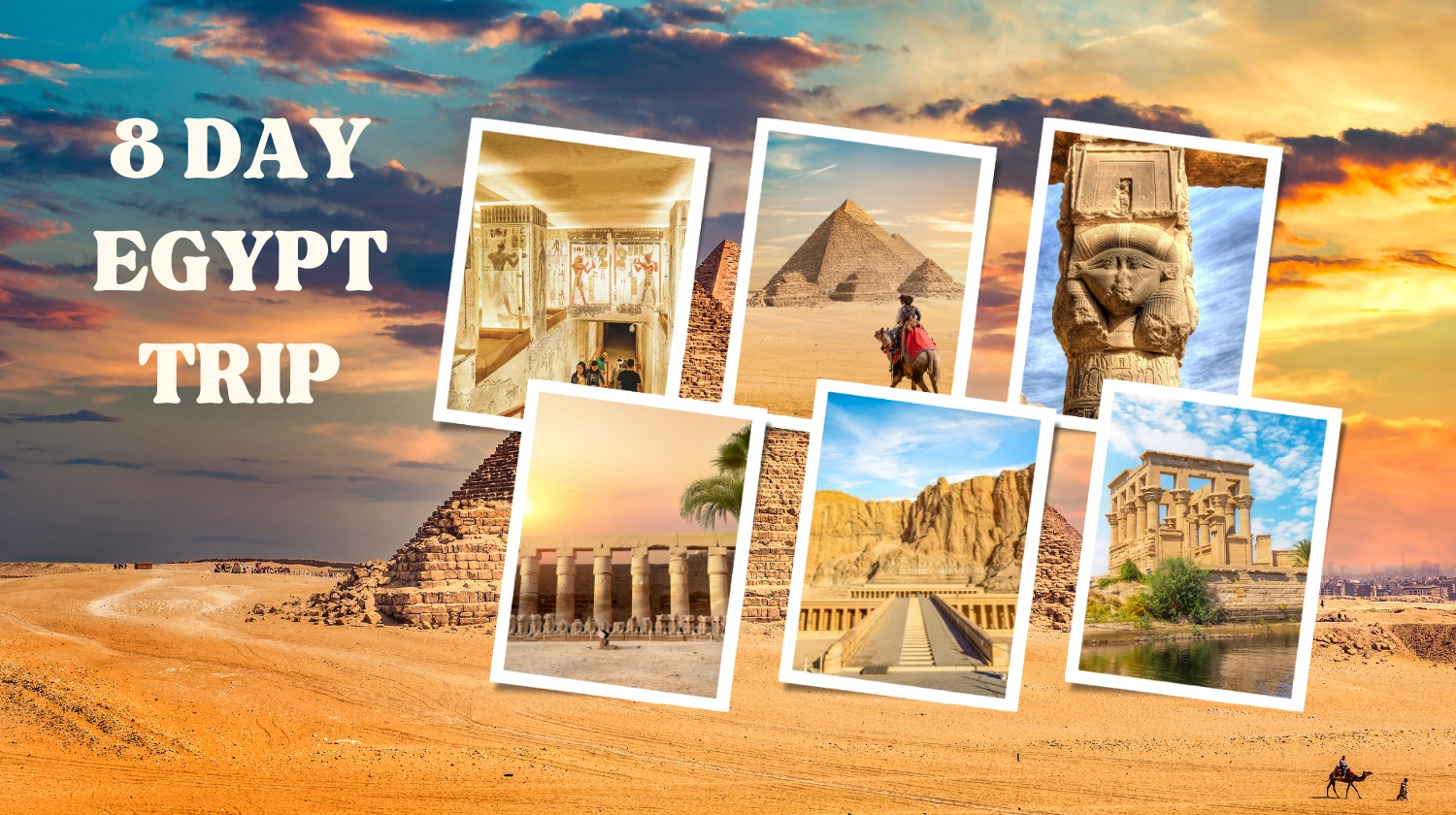Blogs
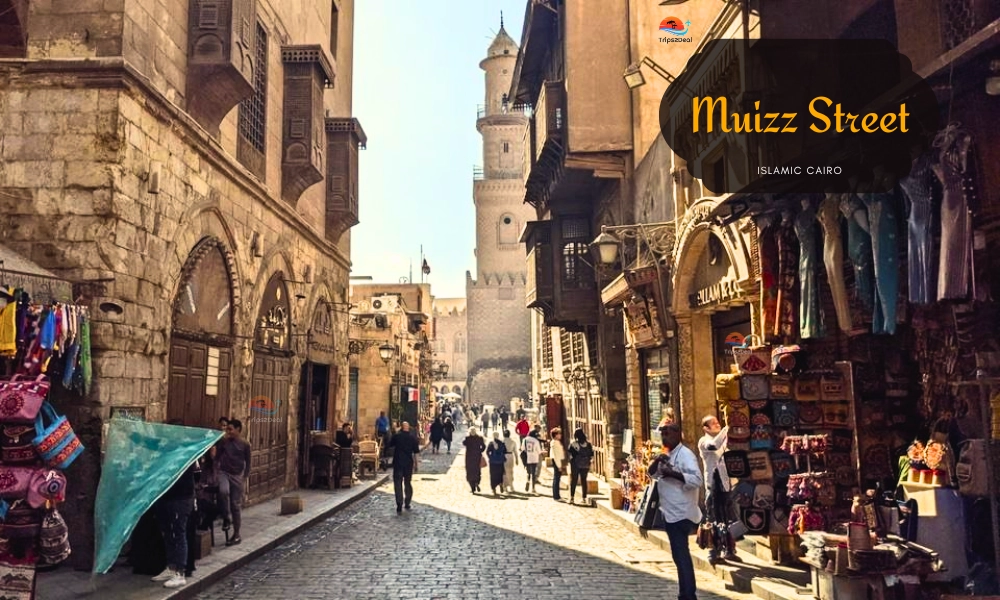
Muizz Street
Hold a breath for a second and think about it, you are entering a hustle and bustle street, where the chirping sound of birds and vendors' carts is adding beauty to it. Where you find every wall, every corner telling you long tales of sultans, merchants, scholars, and mystics. Here, you meet Al-Muizz li-Din Allah Street, commonly named Muizz Street. This is a recognition of a traditional cultural legacy of the heart of Egypt, Cairo.
Almost one kilometer away from Islamic Cairo, Muizz Street is not the oldest masterpiece among all the streets of Cairo, but it is rich in history, art, design, and culture. This was discovered in the 10th century in the Fatimid dynasty. It was structured in a highly attractive way as it was built as the capital of Cairo, where power, faith, and governance meet.
As you move forward along Muizz Street, you'll experience an old history of Egyptian journey, a thousand-year-old legacy that everybody admires:
- Towering mosques that once defined dynastic power.
- Sabil-kuttabs (water fountains and schools) that nurtured both body and mind.
- Bustling markets and caravanserais where traders exchanged goods, ideas, and cultures.
- Palaces and complexes that showcased the ambition and artistry of Cairo’s rulers.
Actually, Muizz Street is not a spot of discovery for today's time, but it depicts the history and past of Egyptian Culture. In the modern era, it is a representative of Egyptian legacy, where locals and visitors travel each day, the street glows during Ramadan Nights, and where a call to Prayer (Athan) delivers an echo in centuries-old minarets.
Briefly, Muizz Street is the ultimate beating heart of Cairo, a unique place where history, spirituality, and day-to-day life chores still walk hand in hand.
Table of Contents
- The Origins of Muizz Street
- Muizz Street During the Mamluk and Ottoman Eras
- Architectural Marvels Along Al-Muizz Street
- The Cultural and Religious Significance of Muizz Street
- Preservation and Restoration
- Muizz Street Today: A Living Open-Air Museum in Cairo
- Popular Attractions and Activities on Muizz Street
- Festivals and Cultural Events on Muizz Street
- Hidden Gems and Lesser-Known Landmarks
- Photography and Souvenir Guide
- Best Time to Visit Muizz Street
- Wrapping Up: Why You Must Visit Muizz Street in Cairo
The Origins of Muizz Street
When the Fatimid dynasty rose to power in the 10th century, they sought to establish a new capital that reflected their wealth, vision, and spiritual authority. In 969 CE, Cairo (then called Al-Qahira, “the Victorious”) was born, and at its very heart lay what would become one of the most famous streets in the Islamic world: Al-Muizz li-Din Allah Street.
Named after the fourth Fatimid caliph, Al-Muizz li-Din Allah, the street was carefully planned as the central spine of the new city. It was not merely a road, but the stage on which the Fatimids would project their power and prestige.
- Original Design: Muizz Street ran in a straight line, connecting Cairo’s two monumental gates: Bab al-Futuh in the north and Bab Zuweila in the south. This alignment made it the main ceremonial and processional route of the Fatimid capital.
- Urban Vision: The Fatimids lined the street with grand palaces, mosques, sabils, and bustling markets, creating a showcase of political authority, religious devotion, and commercial vitality.
- Ceremonial Role: Muizz Street was used for royal parades, processions of the caliph, military displays, and major religious festivals, ensuring that every visitor and resident saw the might of Fatimid Cairo on display.
- Cultural Identity: From its inception, the street was imagined as the political and cultural heart of the city, where rulers, scholars, and merchants intersected in a shared public space.
In its earliest years, Muizz Street was more than just a passage; it was a statement of dominance and ambition. The Fatimids built it to cement Cairo as the jewel of the Islamic world, a role the street continues to play, even a millennium later.
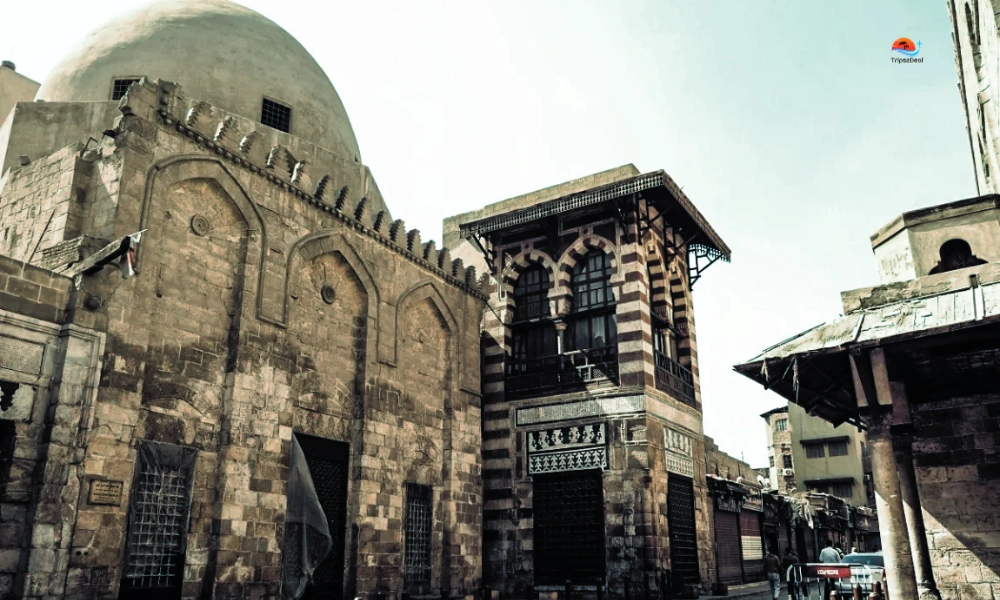
Muizz Street During the Mamluk and Ottoman Eras
Over centuries, Muizz Street flourished under successive Islamic dynasties.
- Mamluk Period (13th–16th centuries): The Mamluks transformed Cairo into one of the most powerful Islamic capitals. Muizz Street became home to spectacular architectural complexes, mosques, madrasas, and hospitals, built to showcase both piety and political legitimacy.
- Ottoman Period (16th–19th centuries): While Ottoman rulers added their own flavor of architecture, they preserved the importance of Muizz as a center of learning, spirituality, and commerce.
- Cultural life: The street bustled with merchants, artisans, and scholars, symbolizing Cairo’s reputation as the “City of a Thousand Minarets.”
Architectural Marvels Along Al-Muizz Street
a. Al-Hakim Mosque: A Symbol of Fatimid Grandeur
Standing proudly along Al-Muizz Street, the Al-Hakim Mosque is one of the most striking reminders of Fatimid ambition and vision. Commissioned in the 11th century by Caliph Al-Hakim bi-Amr Allah, this mosque was not just a place of worship; it was a monumental statement of authority, faith, and architectural mastery.
- Famous for its massive stone minarets and imposing walls.
- Served as both a religious and political symbol during Fatimid rule.
- Today, it remains a major landmark showcasing the unique style of Fatimid architecture.
b. Qalawun Complex: A Masterpiece of Mamluk Architecture
Built in the late 13th century by Sultan Qalawun, this complex is a testament to the Mamluk era’s artistic brilliance.
- Includes a Qalawun Mosque, madrasa, and hospital all in one.
- Renowned for its stunning marble inlays, carved stucco, and stained-glass windows.
- It reflected the Mamluks’ aim to link piety with public service and political prestige.
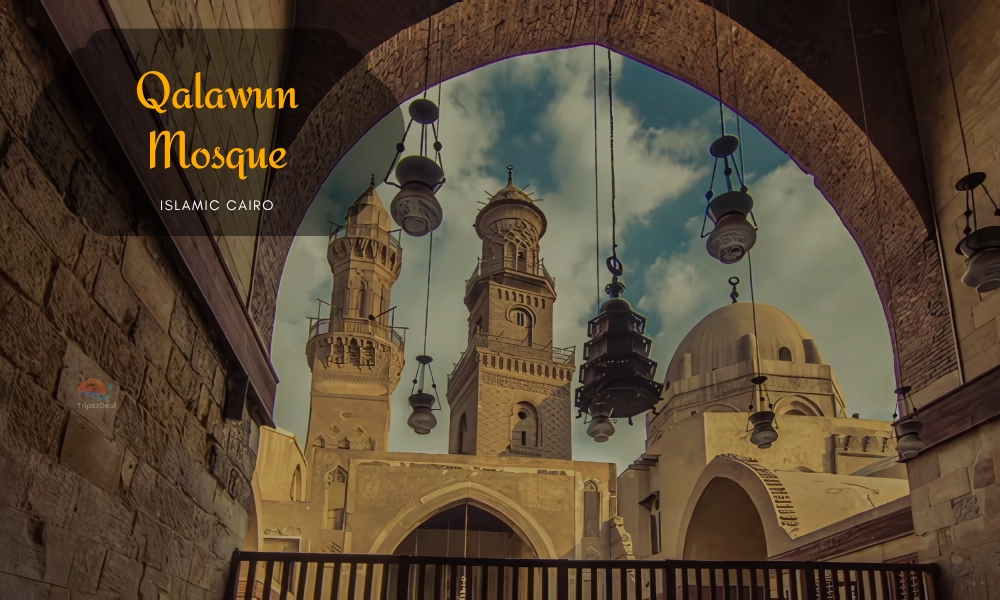
c. Al-Azhar Mosque and Its Influence on Islamic Learning
Founded in 970 CE, Al-Azhar Mosque is among the world’s oldest universities and a symbol of Islamic scholarship.
- It became the center of Sunni learning after initially serving Fatimid Shi’a traditions.
- Continues to function as the headquarters of Al-Azhar University, a global authority on Islamic thought.
- Its multiple renovations over centuries reflect Cairo’s evolving architectural styles.
d. Sabil-Kuttab of Abdel Rahman Katkhuda
Dating to the 18th century, this Ottoman-era monument is one of Cairo’s most charming buildings.
- Sabil (water fountain): Offering free drinking water to travelers.
- Kuttab (Quranic school): Provided education for children, especially the poor.
- A blend of functionality and beauty, decorated with ornate wooden mashrabiyas and marble panels.
The Cultural and Religious Significance of Muizz Street
Al-Muizz Street was never just a road lined with monuments - it was the living pulse of medieval Cairo, where faith, knowledge, trade, and art intertwined. For centuries, it functioned as the city’s cultural backbone, shaping Cairo into one of the most influential Islamic capitals in the world.
- Religious Center: The street was home to some of the city’s most important mosques and madrasas, where Friday prayers drew large congregations, Islamic festivals filled the air with celebration, and Sufi gatherings honored saints and spiritual leaders.
- Intellectual Hub: Scholars, jurists, and students from across the Islamic world gathered in Muizz Street’s madrasas, libraries, and study circles, making it a cradle of learning and debate in fields like theology, philosophy, and science.
- Commercial Hotspot: Its bustling souks and khans (caravanserais) turned Muizz Street into a thriving marketplace. Merchants displayed luxurious textiles, fragrant spices, glassware, and fine jewelry, linking Cairo to global trade routes stretching from Africa to Asia and Europe.
- Artistic Legacy: The street nurtured generations of craftsmen, calligraphers, architects, and metalworkers, whose work adorned mosques, palaces, and homes. Their artistry elevated Cairo’s status as a center of Islamic art and culture.
In many ways, Muizz Street was the heart of Cairo’s identity, a place where spirituality met scholarship, and where trade fueled artistic brilliance. Its legacy continues to remind us that cities are not just built with stone, but with faith, ideas, and creativity.
Preservation and Restoration
In recent decades, Al-Muizz Street has seen remarkable efforts to protect its heritage and bring it back to life.
- UNESCO Recognition: The street is part of Historic Cairo, listed as a UNESCO World Heritage Site, which highlights its global cultural importance.
- Government Initiatives: Large-scale restoration projects by the Egyptian government have cleaned stone façades, reinforced aging structures, and added modern lighting systems to showcase its monuments at night.
- Revival: Once neglected, Muizz Street has been transformed into a pedestrian-friendly heritage trail, where visitors can walk safely and experience Cairo’s past in a vibrant, accessible way.
Today, the street stands as a successful example of how history can be preserved while remaining alive and relevant.
Muizz Street Today: A Living Open-Air Museum in Cairo
Nowadays, Al-Muizz Street is considered the most attractive and admired place in Cairo, as its roots are connected with the legacy, culture, and traditions of all recent dynasties. This is the way it grabs the attention of both locals and international visitors. Today, Al-Muizz Street has become one of Cairo’s most beloved cultural attractions, drawing in both locals and international visitors. Walking along its path truly feels like stepping back in time.
- Atmosphere: With car-free zones, the street is calm and inviting, allowing visitors to wander freely while admiring centuries-old mosques, minarets, and palaces.
- Photography: The stunning blend of architecture, bustling souks, and dramatic night lighting makes it a dream spot for history lovers and photographers alike.
- Events: Regular cultural festivals, heritage walks, and night tours breathe life into the street, turning history into an interactive experience.
Muizz Street is a living open-air museum for those who want to absorb its charm and beauty in their heart and soul, and it may seem, a person doesn't want to find himself outside of this magic.
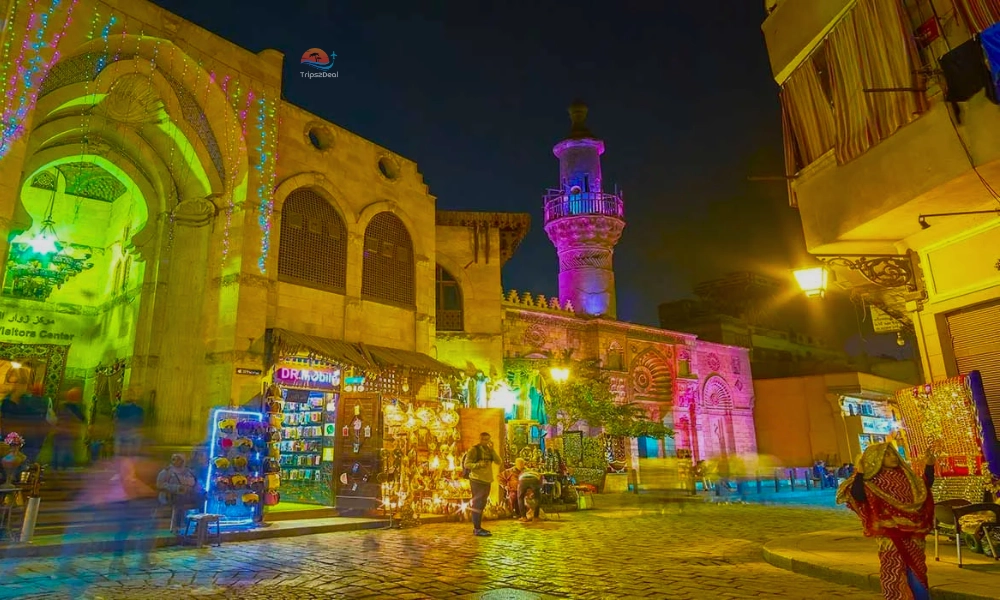
Popular Attractions and Activities on Muizz Street
a. Walking Tours and Guided Historical Experiences
- Professional guides bring the monuments to life with stories of caliphs, sultans, and scholars.
- Night tours are especially magical with illuminated façades.
b. Traditional Handicraft Shops and Souks
- Brass lanterns, carpets, perfumes, and calligraphy art make perfect souvenirs.
- Visitors can watch artisans at work, continuing centuries-old traditions.
c. Coffeehouses, Bazaars, and Local Cuisine Spots
- Sip traditional mint tea or try Egyptian street food like koshari and falafel.
- Historic coffeehouses provide the same communal atmosphere they did centuries ago.
Festivals and Cultural Events on Muizz Street
Muizz Street is not only a traditional timepiece, but it is also something that delivers an intimate cultural stage. During the religious festivals or on occasional moments, this street makes itself prepared as a bride that transforms a whole moment into a lively celebration.
- Ramadan Nights: lantern-lit streets, Qur’an recitations, and communal iftar meals that bring families and visitors together.
- Mawlid al-Nabi (Prophet’s Birthday): processions, Sufi chants, and traditional sweet stalls filling the air with festivity.
- Cultural Performances: storytelling sessions, folk dances, and occasional art exhibitions organized by local authorities.
These cultural festivals and events depict how locals celebrate their joyous moments so deliberately in Muizz Street and how it represents the living part of Cairo’s recognition, proving that it's a segment of Egypt where people love to express, and it's not just a historical landmark.
Hidden Gems and Lesser-Known Landmarks
Do you want to explore more locations beyond grand mosques and complexes? There are some hidden gems and not too many famous traditional landmarks. But, very rarely, history seekers and adventurous explorers find these surprising and charming locations on their own that hold an added value of beauty and smoothness.
- Sabil-Kuttabs: Ottoman-era public fountains with small schools above, decorated with ornate stone and woodwork.
- Caravanserais & Merchants’ Houses: Old trading hubs where goods like spices and silks were stored.
- Modest Mosques & Madrasas: Often overlooked, but rich in detailed inscriptions, marble floors, and unique minarets.
Discovering these charming and attractive locations increases the demand for visiting Cairo, as a preferred city among all other cities for travelers. This enhances the personal and intimate glimpse of Cairo’s Islamic heritage.
Photography and Souvenir Guide
Looking for some photography instructions and tips that deliver aesthetic vibes, especially when you roam in streets alone with dim-lighted lanterns and smell the fragrance of old walls. Let's read below something that makes your journey scenic in both photographic and real life.
Photography Tips:
- Early mornings capture serene domes and minarets in golden light.
- Evening shots highlight glowing lanterns, bustling shops, and vibrant crowds.
- Close-up details, geometric carvings, Arabic calligraphy, and wooden mashrabiyas make perfect photo subjects.
Souvenir Ideas:
- Brass lanterns and copperware
- Handwoven textiles and carpets
- Traditional jewelry and miniature mashrabiyas
By following a guide, you can hold a memory in the several-decades-old history of Cairo by using an appropriate mix of photos and souvenirs. This adds a flavor and value to your whole journey, and allows visitors to make unforgettable memories here.
Best Time to Visit Muizz Street
- Morning: Peaceful atmosphere, great for architecture lovers.
- Evening: Lively with lights, music, and bustling crowds.
- Attire: Modest clothing recommended due to mosque visits.
- Nearby landmarks: Khan el-Khalili Bazaar, Sultan Hassan Mosque, and the Cairo Citadel make ideal additions to a day’s itinerary.
Wrapping Up: Why You Must Visit Muizz Street in Cairo
Muizz Street is not just a walking street, but it is actually a spot of locals and visitors where their hearts, empathy, humbleness, and living souls meet each other. A foundation of Fatimid, grandeur of Mamluk, and Ottoman, all added decency and elegance to beautify the architecture of Muizz Street. The blink of each dynasty delivers a new chapter of Egypt’s legacy and tradition.
For visitors and explorers, this is a golden opportunity where they can find a true 1000 years of Islamic history at one spot.
Discovering this street as you step forward, this offers a remarkable journey into Cairo’s authentic enthusiasm, a place where you’ll find mosques, markets, and masterpieces that deliver an inspiring look in a distinct way.
If you are a visitor, a traveller, and a history-seeker, Visiting Muizz Street in a prior phase will make your journey clear and distinct while exploring other famous places along this street. This street is a timeless path where you meet the history, culture, and tradition of different eras in one spot.



